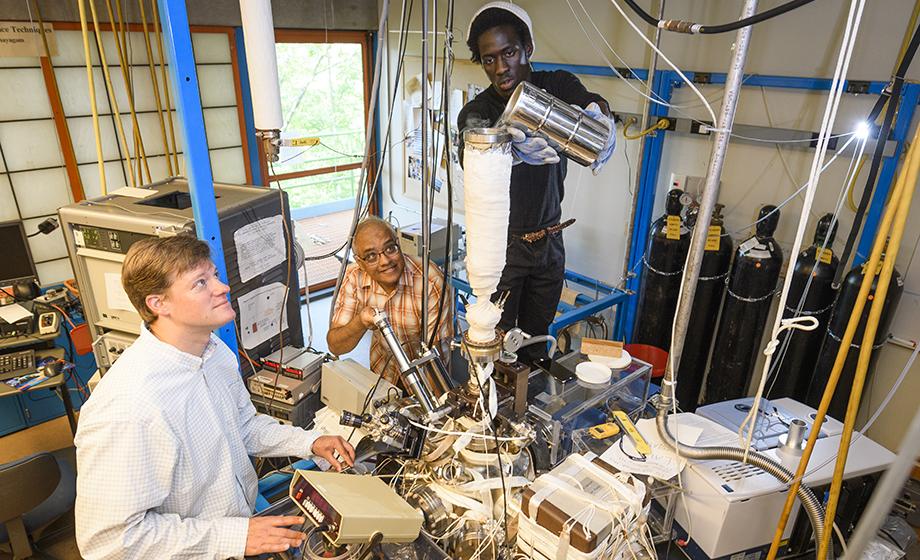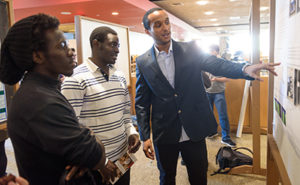
Muhammad Kasule ’18 is graduating from Clark University this December with multiple research experiences in hand, including one where he’s examining how life may form in outer space.
“My research is centered on understanding how prebiotic molecules form in space,” Kasule says. “Prebiotic molecules are essentially the building blocks of life. They are the molecules that go on to form into the proteins that make us who we are.”
Kasule is working on a research project with Michael Boyer, associate professor of physics at Clark, and Christopher Arumainayagam, professor of chemistry at Wellesley College. The professors’ collaboration has resulted in four publications, and Boyer expects Kasule’s name to be added to at least one upcoming paper. Kasule will continue analyzing data from the project next spring as part of Clark’s fifth-year Accelerated B.A./Master’s Program in Physics.
About Muhammad Kasule ’18
Major: Physics
Hometown: Born in Malaysia; has lived in Brunei, Uganda and, for high school, Saudi Arabia
Boyer began working with Arumainayagam while a research scientist at Wellesley in 2010. As part of Clark’s Summer Science Research Program, Kasule worked in Arumainayagam’s lab one to two times a week last June and July while spending the rest of his time on calculations and analysis.
The lab contains specialized equipment, such as an ultrahigh vacuum chamber, that can simulate conditions in the interstellar medium, the space in between star systems in the galaxy. The interstellar medium contains micron-size dust grains that are covered by a hundred-molecule-thick ices made of water, ammonia, methanol, carbon monoxide and carbon dioxide.
“The overarching goal of these studies is to understand the astrophysical processes that lead to the synthesis of prebiotic molecules in the interstellar medium. Toward this goal, we are interested in better understanding the relative roles that photons (light) and electrons play in molecular synthesis within cosmic ices,” Boyer says. “Kasule’s research is focused on understanding photon-initiated chemical synthesis within ammonia ices. Ammonia is the most abundant nitrogen containing molecule found in the interstellar medium.”
To irradiate the ices used in their experiments, the research team uses a light source, which simulates irradiating light from stars, or an electron gun, which simulates electrons produced when high-energy radiation interacts with matter, according to Boyer.
“This irradiation leads to molecular dissociation and, ultimately, synthesis of more complex molecules. We can then analyze our thin films using a variety of techniques to determine what products have been formed,” he says.

Kasule’s research resulted in a senior honors thesis titled “Studying Molecular Synthesis in Cosmic Ices.” He also presented a research poster at Clark’s recent Fall Fest.
In his four years at Clark, Kasule gained experience on other research projects, including working with Boyer to investigate the electrical and structural properties of cuprous oxide nanocubes, a type of superconductor (a collaborative project with Luis Smith, associate professor in the Carlson School of Chemistry and Biochemistry), and with Arshad Kudrolli, professor and chair of physics, and Ranjan Mukhopadhyay, associate professor of physics.
“At Clark, I found it was very easy to build relationships and get help from the faculty as well as learn about their research. This access to information is what makes Clark such a special university to me,” Kasule says.
All this research experience will help him as he eventually pursues a Ph.D. and a career as a physics professor.
“Getting to apply what I learned in the classroom to my research has given me more confidence,” he says. “Seeing how all the book formulas and equations can be applied in real life gave me an insight into physics that cannot be provided purely in a classroom setting.”


